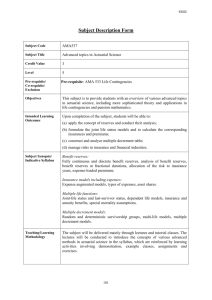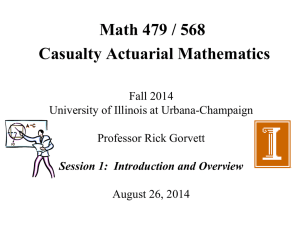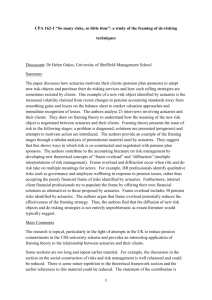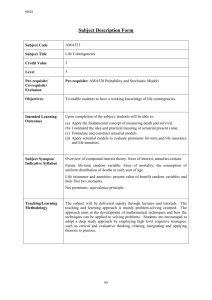Superior/subordinate
advertisement
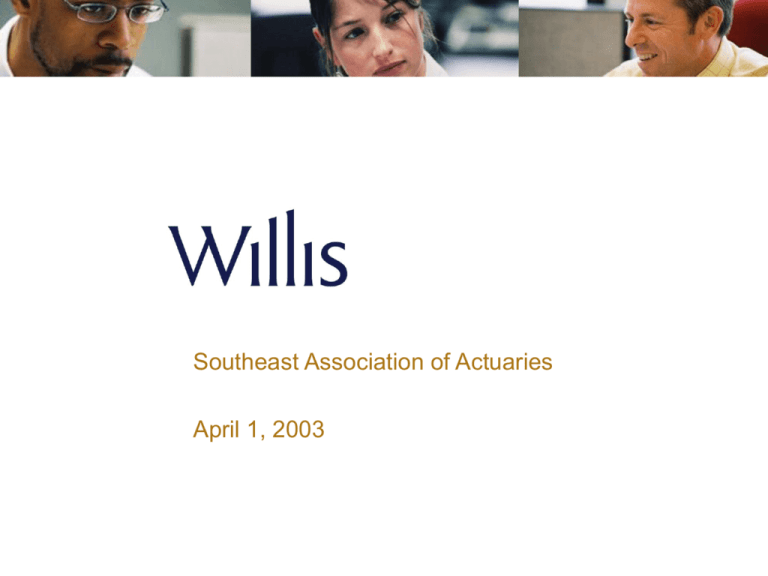
Southeast Association of Actuaries April 1, 2003 Interactions of Actuaries and Brokers Brokers and Actuaries MUST Cooperate Brokers and Actuaries MUST Cooperate Actuaries won’t work for brokers because: • Brokers don’t understand actuaries’ work • Brokers are “hip shooters” • Brokers aren’t quantitative • Brokers make promises that are not immediately provable Brokers and Actuaries MUST Cooperate Brokers won’t work for actuaries because: • Actuaries aren’t “people oriented” • Actuaries rely only on facts and figures to make decisions • Actuaries don’t have a sense of urgency Two disciplines cannot have an effective Superior/subordinate relationship. Cooperation is necessary to achieve mutual success. Examples of successful cooperation Examples of successful cooperation – Manufacturing Company Clients needs • Combine existing programs into one coordinated program and reduce cost of excess cover • Create consistent methods for determining retentions • Realize economy of scale purchasing power for ancillary services such as loss control and claims administration Examples of successful cooperation – Manufacturing Company Actuary’s role • Combine loss forecasts and probability distributions to determine whether risks were combinable and whether economies of scale could be achieved • Present results to risk managers in separate divisions so they understood the value to their division (the risk managers did not want a combined program) Examples of successful cooperation – Manufacturing Company Broker’s role • Identify the problem and opportunity • Communicate client’s need to actuaries and manage communication channels between client and actuaries • Effectively use actuaries estimates to achieve economy of scale with suppliers • Convince client of the practical nature of the actuaries’ work Examples of successful cooperation – Manufacturing Company Results • Programs combined in a captive • Economies of scale achieved • Actuaries developed new technique for analyzing probability distributions for different lines of coverage Examples of successful cooperation – Construction Company Clients needs • Revise loss forecast to remove large indemnified loss • Use loss forecast and reserve certification to negotiate loss funding and security for unpaid loss reserves Examples of successful cooperation – Construction Company Actuary’s role • Review existing actuarial work to determine whether removal of indemnified loss was legitimate • Review existing reserves for sufficiency • Forecast losses without the effect of the indemnified loss • Negotiate reserve adequacy with underwriter Examples of successful cooperation – Construction Company Broker’s role • Communicate clients needs to actuaries • Gather complete, relevant data for actuarial work • Identify client’s needs for negotiation on reserve funding • Convince client of practicality of actuaries’ work Examples of successful cooperation – Construction Company Results • Loss forecast revised to eliminate effect of indemnified loss • Loss funding and security for unpaid reserves reduced based on actuarial estimates • Active involvement of actuaries with client, underwriter and external auditor



